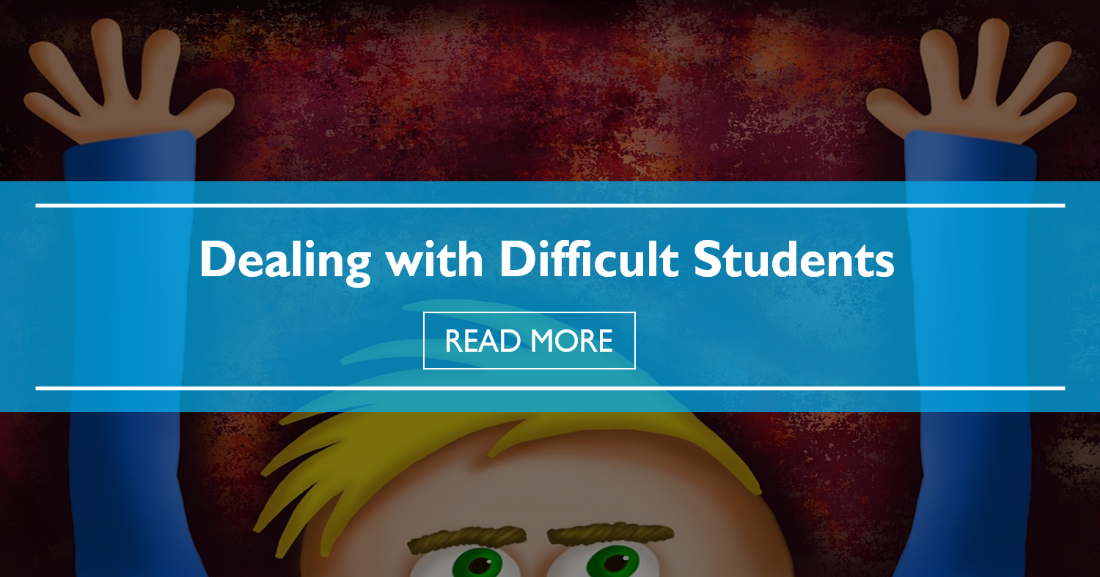Dealing with Difficult Students


This tends not to be so common when it comes to teaching adults. A lot of people who are learning English are doing it for their own gain. Normally the money for the classes is going to come out of their own pockets, and therefore they will be wanting to pay as much attention as possible. In some countries, people might even just take English classes in order to get out of the house. Either way, those who are paying for the service themselves will be paying the utmost attention to their teacher. But when it comes to teaching children, there might be problems in this department. It is therefore important to know how to handle them. Also be aware of the different rules and regulations of the school on is in before doling out punishments. Usually teachers of English as a second language tend to have pleasant experiences in the classroom, but on rare occasions when things don’t go right you need to understand what to do.
Disruptive Students
Students who disrupt the class may or may not know they are doing it. This depends entirely on the situation. When teaching adults, there could be one member of the group who enjoys speaking. They may speak a lot, and therefore cause others to miss out on their turn. This is usually not a problem, and one will easily be able to turn this around in order to make it useful for the entire class. Organizing an activity which will involve everybody, but with that person leading it is often a good idea. This way they will be able to continue talking as much as they please, and everybody else will be able to get their say as well!
Set Down Rules
When starting with a specific course, or at the beginning of a class if one is substituting, it is important to set down the rules. Tell the students what is appropriate and what isn’t. This will usually help to set the tone of the classes that are to follow. This is especially important when one is teaching teenagers and children. Encourage them to raise their hand when they wish to speak, and also state that it is important that they speak only in English. Emphasize this to the students. By having a list of rules by which they have to abide at the beginning of the class, the students will be more likely to listen and participate accordingly. It is also a good idea to emphasize respectfulness. This is not just to the teacher, but also to their fellow students.
Also see: ‘Classroom Management and Discipline’
Singling Students Out
Although a lot of teachers don’t like doing this, it is usually a very effective method. By putting the student on the spot, they will realize that all the attention is on them and therefore they will probably be a little quieter in the future. Again, this is usually more so the case with teenagers than any other type of student but it is also possible with adults. If one finds that the students is continually talking, then ask them a question about the subject at hand. If they weren’t listening, they won’t be sure what to say. This is also a good opportunity to discuss the topic further and might lead to some insight. Of course, some students relish attention. It is therefore a good idea to turn this attention into a positive thing. Try getting them to go up to the board and explaining a particular concept or idea.
Talkative Students
A good method is, if a student is speaking too much and disrupting the class, to walk over to them and stand next to them. Often they will feel embarrassed and quieten down a little bit. Another good idea is, if one hears students talking, to ask them to share it with the rest of the class. Normally they will be a lot quieter after this, for fear of being singled out.
Other suggestions include drawing up a “classroom contract” which the students should all agree to. It might also be effective to get the students themselves to think up the rules. Ask them what they think should be appropriate classroom behaviour with regards to listening, respect and disrupting the class. All of these methods usually work quite well, although there may be special cases. If one is working in a secondary or primary school, it might be pertinent to send continually disruptive students to the principal.
Have a classroom management idea that works very well for your class? Please share it in the comments below!